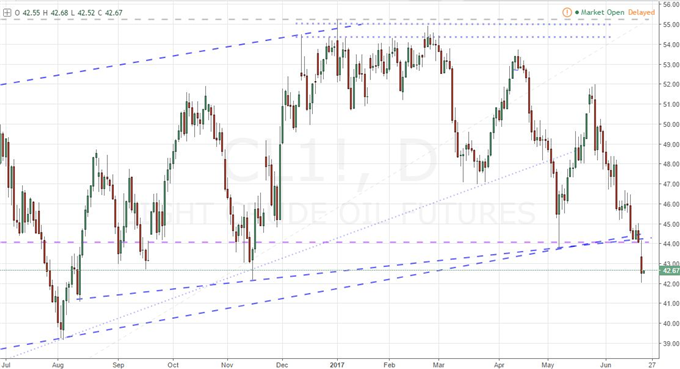Talking Points:
- Fundamental analysis is as complex as technicals where dynamics change according to the market's focus
- There is a draw to use fundamentals to justify or offer easy explanation but that can lead to misunderstanding and bad trades
- Oil following inventories, risk appetite and growth concerns, EUR/USD and monetary policy all reflect changing dynamics
See how retail traders are positioning in the FX majors, indices, gold and oil intraday using the DailyFX speculative positioning data on the sentiment page.
Fundamental analysis is an important tool for assessing the market's and one's own bearings, but it can also be used to deceive ourselves. Miss-interpreting developments in the markets is common. Doing so to suit one’s own agenda or reinforce an existing bias to justify an exposure taken or intended is nearly as familiar. It is easy to draw conclusions from a complicated backdrop that readily suits our own needs. However, such evaluations do us little good for our trading as the advantage found through analysis is undermined by our preconceived reasoning. Recognizing this intended or unexpected route is important for setting reasonable trade evaluation.
When we assess the pitfalls of a poorly routed conclusion, it would be more reasonable to simply ignore fundamentals rather than conclude something from them that is not actually there. In the latter case, justification can be used to hang onto or take a position that we otherwise have no business even entertaining. These poor trades are taken with an air of seemingly honest analysis that skews the assumed probability and/or risk/reward. Further, the views we often take are the end result of an aim to find the more simplistic market view - a virtuous enough objective but no less misguided in its appreciation of the dynamics behind the market.
The motivation for this review was oil. Over the past few trading days, we have seen headlines that attribute the commodity's drop to a rise in US based inventories. Yet, the following day, similar stockpile data would drop and crude will continue to drop. Rather than reviewing this move in context of the reversed circumstances, the headlines trumpeted the move 'despite' the supply-demand development. Markets whereby direct event risk motivates price action whereas contradictory development is merely overlooked is in many ways the definition of a bullish or bearish (depending on direction) market. In reality, when we have switch this immediate clear, it is usually an indication that this particular fundamental theme simply doesn't not command the attention of the masses. We find this not just the case with the simple supply-demand consideration for energy but also the skew attributed to risk trends and monetary policy. Why is fundamental justification so dangerous and how can we spot it? We discuss this in today's Strategy Video.
To receive John’s analysis directly via email, please SIGN UP HERE.






